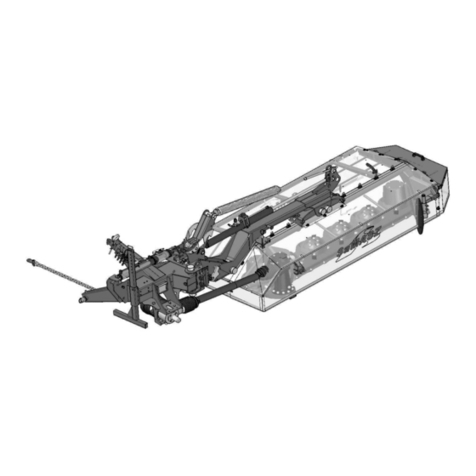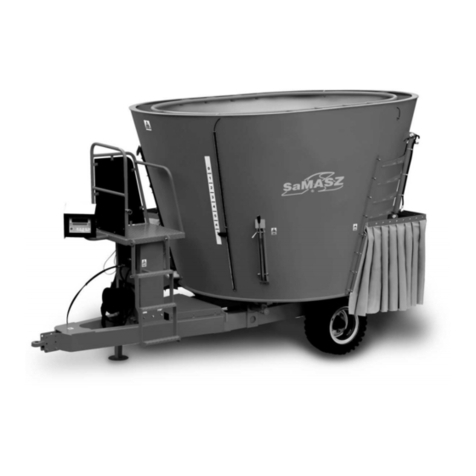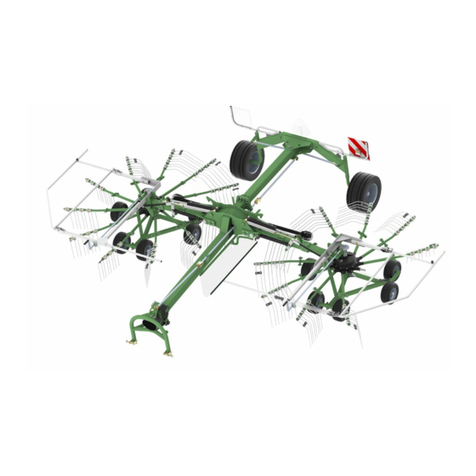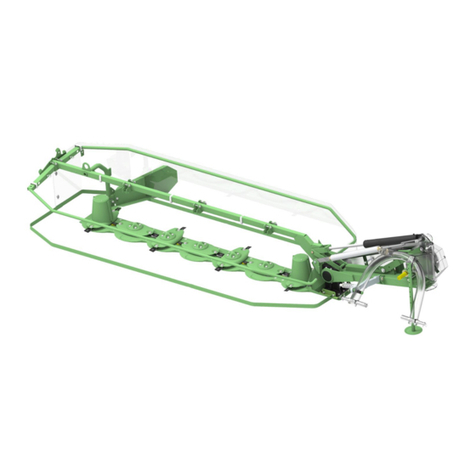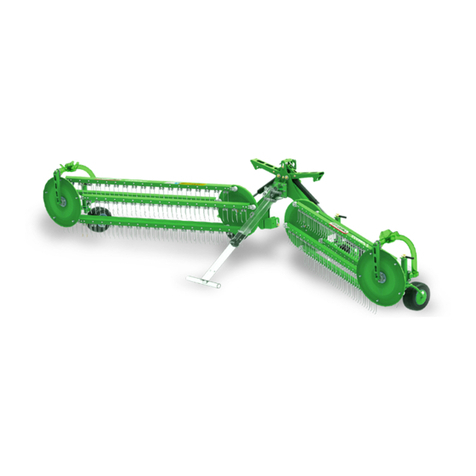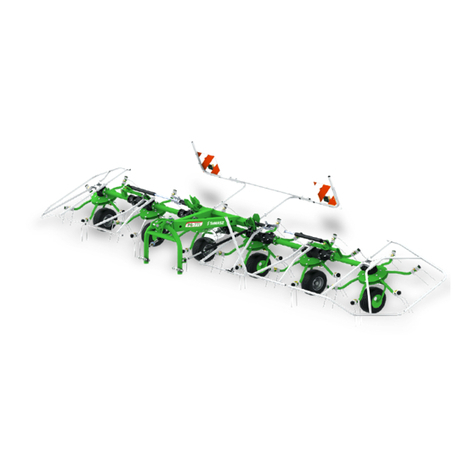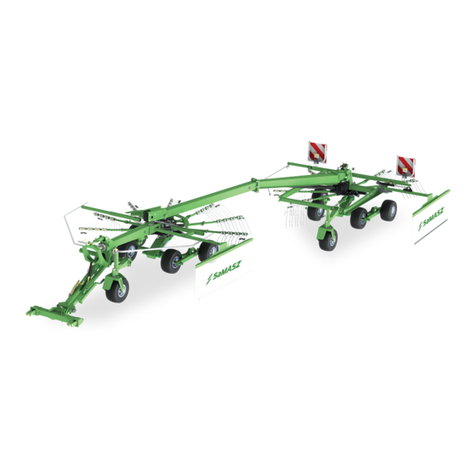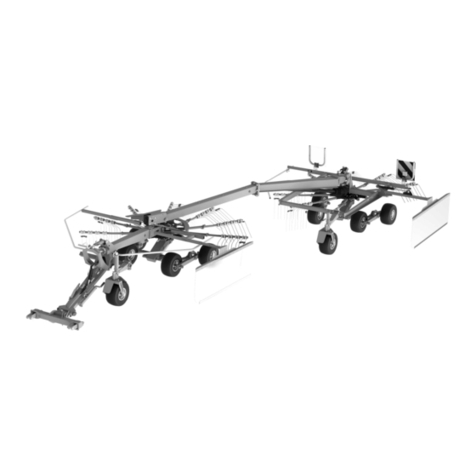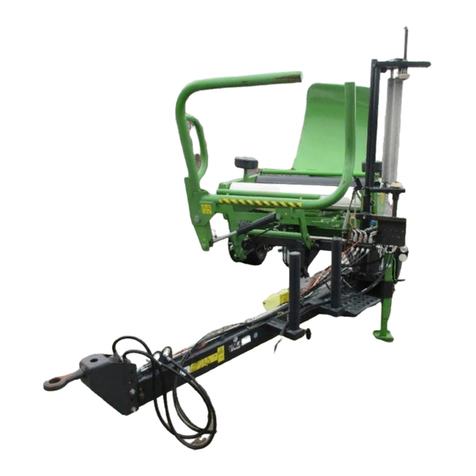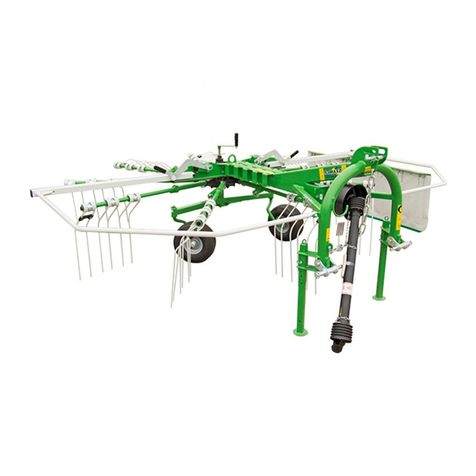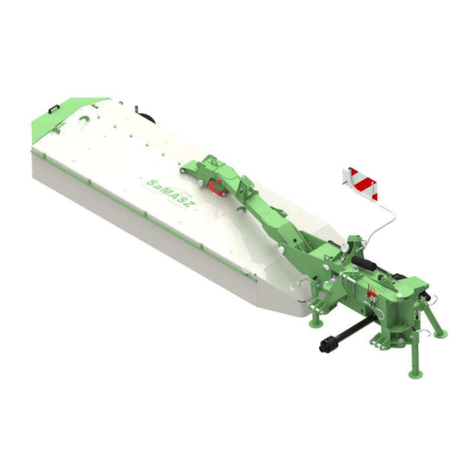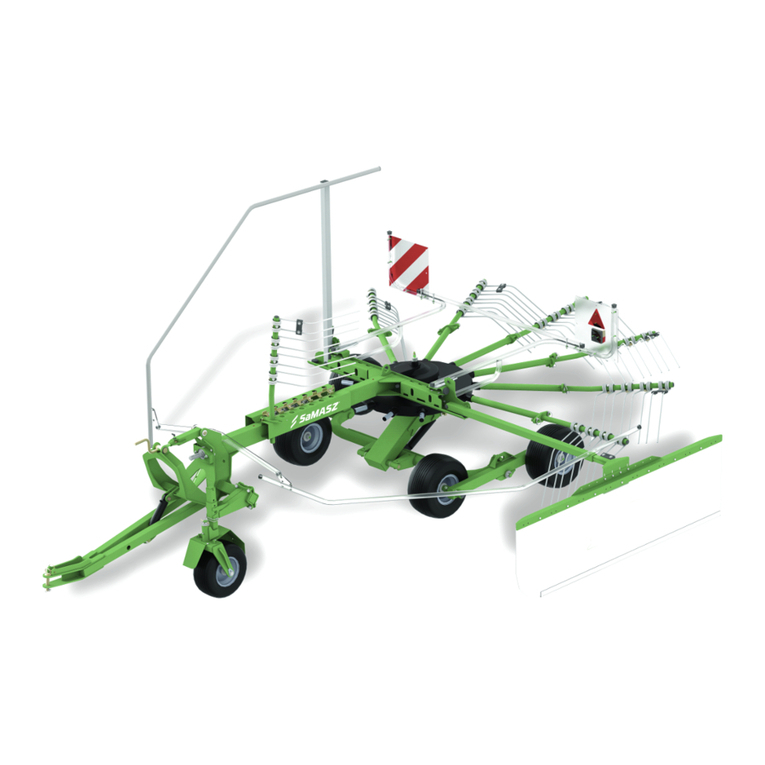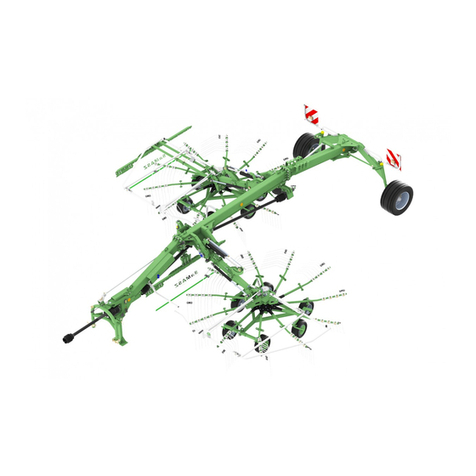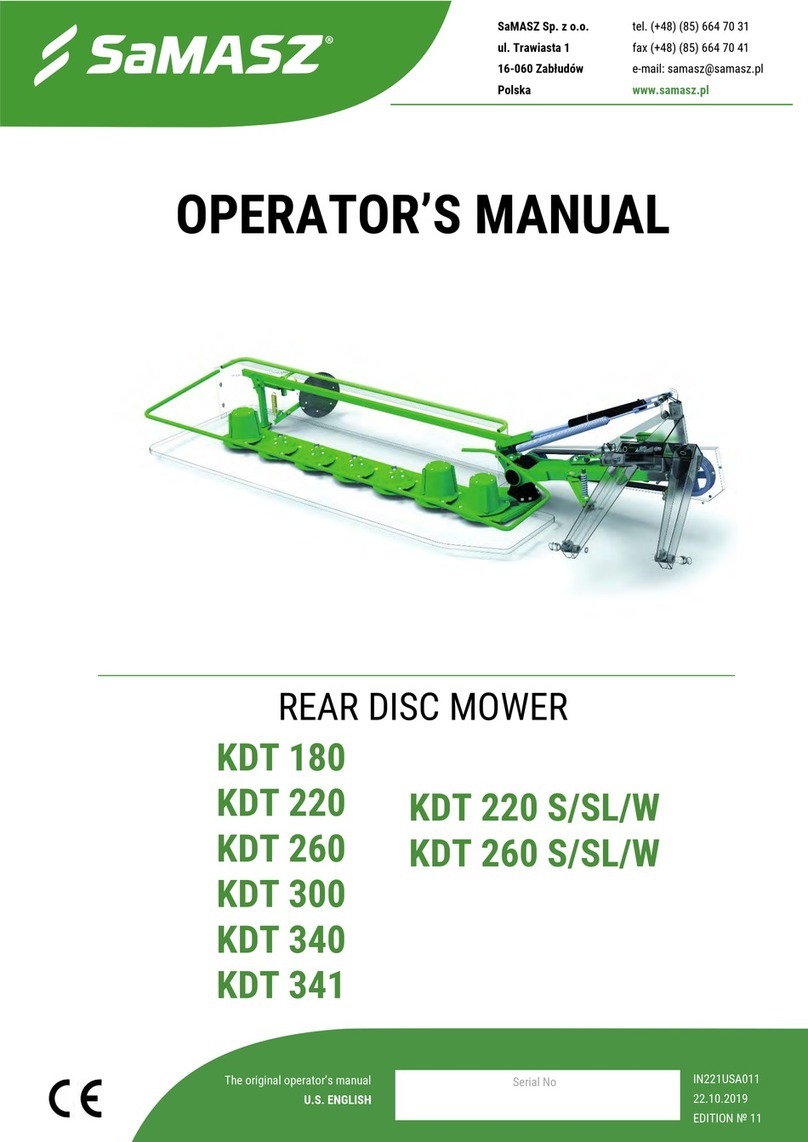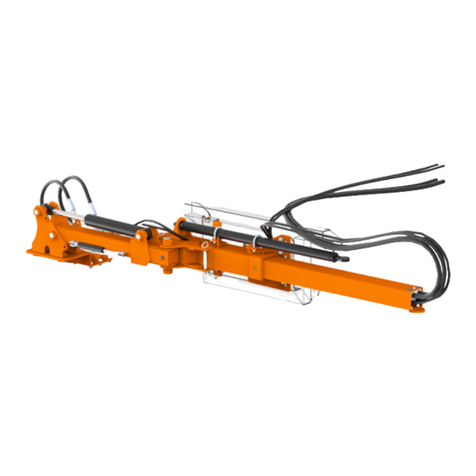
Instruction manual
Two rotor rake
TANGO
- 1 -
Contents page
1. IDENTIFYING THE MACHINE..............................................................................................................................2
2. INTRODUCTION .......................................................................................................................................................2
3. INTENDED USE .........................................................................................................................................................3
3.1. Technical data .......................................................................................................................................................3
3.2. Design and operating principle .............................................................................................................................4
3.3. Equipment and spare parts ....................................................................................................................................4
4. SAFETY ADVICE AND CAUTION .........................................................................................................................5
4.1. Safety rules and regulations ..................................................................................................................................5
4.2. Transport...............................................................................................................................................................7
4.3. Moving machines onto another vehicle for transport............................................................................................7
4.4. Operating parts......................................................................................................................................................8
4.5. Telescopic articulated shaft...................................................................................................................................8
4.6. Hydraulic assembly...............................................................................................................................................8
4.7. Residual risk..........................................................................................................................................................9
4.7.1. Danger of being caught or pulled in................................................................................................................9
4.7.2. Danger of injury, abrasion and damage of skin...............................................................................................9
4.7.3. Danger of liquid ejection out of hydraulic system ..........................................................................................9
4.7.4. Bans ................................................................................................................................................................9
4.7.5. Residual risk assessment...............................................................................................................................10
4.8. Safety decals and their meaning..........................................................................................................................10
5. USING THE RAKE ..................................................................................................................................................13
5.1. Mounting rake on tractor.....................................................................................................................................13
5.1.1. Control panel................................................................................................................................................14
5.2. Preparing rake for transport ................................................................................................................................15
5.3. Preparing rake for transport on public roads.......................................................................................................16
5.4. Mounting telescopic articulated shaft .................................................................................................................16
5.5. Switching the rake from transport to working position.......................................................................................17
5.6. Preparing rake for operation................................................................................................................................18
5.7. Operation.............................................................................................................................................................21
5.7.1. Setting rake for forming one row ..................................................................................................................21
5.7.2. Switching rake from forming one to forming two single rows .....................................................................23
5.7.3. Adjustment of front safety curtain inclination angle.....................................................................................23
5.8. Mechanism for sequential lifting and lowering of working units ....................................................................... 24
5.8.1. Sequential lifting...........................................................................................................................................24
5.8.2. Sequential lowering.......................................................................................................................................24
5.9. Protection mechanism of front safety curtain......................................................................................................25
5.10.Lifting rake on headlands and transport position ................................................................................................25
5.11.Removing clogging and jams..............................................................................................................................26
5.12.Dismounting machine from tractor .....................................................................................................................27
6. MOUNTING AND ADJUSTMENTS ......................................................................................................................27
6.1. Installing tines.....................................................................................................................................................27
6.2. Replacing connecting rods..................................................................................................................................28
6.3. Daily maintenance...............................................................................................................................................28
6.4. Off-season maintenance and storing ...................................................................................................................29
6.4.1 Restarting the machine after longer idle periods............................................................................................29
7. LUBRICATION ........................................................................................................................................................30
7.1. Gear.....................................................................................................................................................................30
7.2. Joints and bearings..............................................................................................................................................30
7.3. Risks present when lubricating ...........................................................................................................................31
8. DEFINING THE TOTAL WEIGHT, AXIS LOAD, TYRE LOAD CAPACITY AND MINIMUM LOAD ....32
9. POSSIBLE DEFECTS AND THEIR REPAIRS ....................................................................................................34
10. RAKE REPAIR AND WITHDRAWAL FROM USE ...........................................................................................35
10.1.Repair..................................................................................................................................................................35
10.2.Disassembly and withdrawal from use................................................................................................................35
11. WARRANTY CARD................................................................................................................................................. 35
12. WARRANTY TERMS..............................................................................................................................................36
12.1.Warranty claim procedure...................................................................................................................................36
12.2.Warranty repairs record ......................................................................................................................................37

